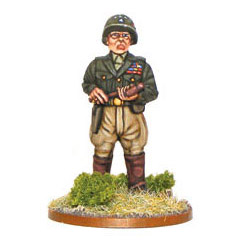A little fun this week provided by Roger Gerrish – what might have happened if ‘Blood and Guts’ had continued his wrecking-ball advance East, and into the Soviets?
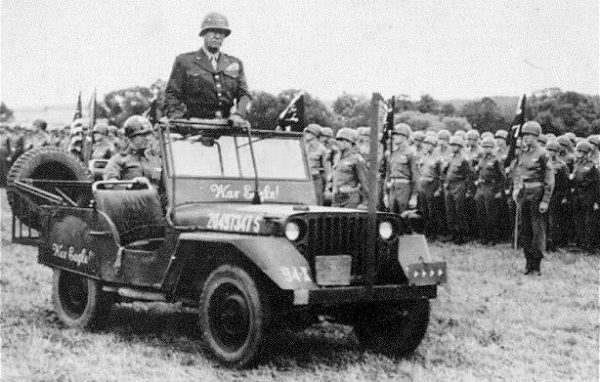
A Bolt Action 1946 ‘What if?’ situation by Roger Gerrish
Whilst browsing the Ostfront theatre book my attention was caught by a couple of notes at the end of the Bagration to Berlin section. There is a ‘What if’ section where the author speculates on some match ups of armies outside of the traditional Allies versus Germany setup. Now I have always been a fan of alternative history and had coincidentally been reading some speculations on what might have occurred if following the defeat of Germany the victorious Western Allies and the Soviet Union had come to blows over the partition of post-war Europe.
The more I thought about it the more I realised what an entertaining prospect it would be for Bolt Action players possessing late war Western Allied and Soviet armies. GIs going head to bloody head against the battle hardened veterans of the Soviet army. Tank War scenarios would see General Patton’s Sherman and Pershing tanks clashing with Zhukov’s T34s and Josef Stalin tanks. This prompted me to write this article with a little bit of ‘background history’ and some suggestions for gaming this fascinating scenario using Bolt Action and Tank War.
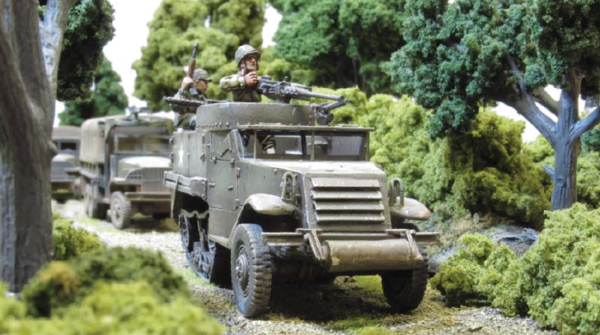
The warm and friendly meeting of American and Soviet troops at Torgau on the River Elbe in April 1945 seemed to herald the end of an era of total war and be ushering in a new period of peace and cooperation. Unfortunately that dream was soon shattered. Although the partition of Europe had been decided during the Tehran, Yalta and Potsdam conferences there were many on the Western Allied side who felt uncomfortable. They were faced with the unpalatable prospect of a totalitarian Soviet Union occupying or controlling countries that had recently been subjugated by the Nazis. Churchill particularly was distressed about the future of Poland, a country whose freedom Great Britain had gone to war to preserve. Whilst still Prime Minister he commissioned a study aptly named ‘Operation Unthinkable’ to forecast the results of an Allied offensive against the Soviets intended to push them back to their pre-war borders. The results were sobering predicting massive Western Allied losses whilst not guaranteeing a favourable result. Certainly at the political level there was little if any enthusiasm for such an endeavour. However, history has shown that strong-willed individuals, breakdowns in communications or simple miscalculations can trigger incidents with far reaching consequences.
When looking for such a strong-willed individual you need look no further than the colourful and controversial General George Smith Patton commander of the United States Third Army. Arguably he was a superb general with a real grasp of the effectiveness of armoured forces. Under his leadership the Third Army had blazed a trail across France and then Germany in 1944 and 1945. Many have speculated that had he been allowed to continue to advance the Western Allies could have taken Berlin before the Soviet Union. It therefore irritated him greatly when he was ordered to halt at the Elbe River to allow the Soviets to consolidate their gains in Eastern Germany and Austria as agreed by the politicians. Patton’s own diaries certainly reveal that he had nothing but contempt for the Soviet armies.
“In my opinion, the American Army as it now exists could beat the Russians with the greatest of ease, because, while the Russians have good infantry, they are lacking in artillery, air, tanks, and in the knowledge of the use of the combined arms, whereas we excel in all three of these. If it should be necessary to fight the Russians, the sooner we do it the better.
And additionally he wrote….
“Their (the Soviet) supply system is inadequate to maintain them in a serious action such as I could put to them. They have chickens in the coop and cattle on the hoof — that’s their supply system. They could probably maintain themselves in the type of fighting I could give them for five days. After that it would make no difference how many million men they have, and if you wanted Moscow I could give it to you. They lived on the land coming down. There is insufficient left for them to maintain themselves going back. Let’s not give them time to build up their supplies. If we do, then . . . we have had a victory over the Germans and disarmed them, but we have failed in the liberation of Europe; we have lost the war!”
Conspiracy theorists have suggested that his death in a road accident in the December of 1945 was an assassination to prevent Patton from upsetting the post-war applecart. In reality he was fully aware of the wishes of his political masters and would never have gone rogue triggering the next round of World War. However a little anecdote from his biography provides us with an incident that had things proceeded differently might have changed history. After the German surrender Patton had been made military governor of Bavaria. As part of his duties he was present at a meeting between the Allies when a Soviet representative openly demanded that the US Forces should immediately cede the entire territory of Austria to the Soviet Union.
In typically blunt fashion, Patton did not argue but picked up the phone and to the horror of the official and his translators ordered a Corps of US troops to cross the River Elbe into Soviet occupied territory! Amusingly there was no one on the other end of the phone it was a bluff; and the rattled official hurriedly withdrew his demands. However what if Patton had not been bluffing, or what if the Soviet representative had not been cowed by this threat. In such circumstances could Allied and Soviet forces have become embroiled in an incident which might have escalated into a theatre wide conflict? Certainly throughout the long Cold War many historians and analysts believed that if war had occurred it would most likely have been through such an incident or miscalculation.
What is certain though is that the fighting would have been brutal with two adversaries at the height of their offensive power clashing across Germany and Austria. Whilst the Soviets had huge numbers of infantry, tanks and artillery which far outnumbered their erstwhile Allies they were also at the end of some very long supply lines and had been living off the land they conquered. Maintaining that supply whilst being interdicted by the Western Allies formidable tactical airpower would have been difficult. The outcome could have gone either way.

Recreating Red Star-White Star in Bolt Action
Scenarios
Any of the standard scenarios from the Bolt Action rulebook are perfectly appropriate for a Red Star-White Star game and many of those included in the Ostfront and D Day to Germany theatre books can be easily adapted by simply removing the German forces and replacing them with the US or Soviets as appropriate. I’ve personally had a lot of fun gaming a US-opposed crossing of the River Elbe supported by airborne drops by using the Operation Plunder and Market Garden scenarios from the D Day to Germany Theatre Book. I have also similarly taken the City Fighting rules from Ostfront to help game part of a desperate defence of Hamburg as Western Allied forces attempt to blunt a Soviet assault to capture this important port.
Army Lists
Whilst the Bolt Action Rule book allows you to pick armies usable in this hypothetical conflict, for more guidance you need go no further than the Bolt Action army books and theatre books, which provide many examples of Late War Soviet and United States forces.
The Soviets
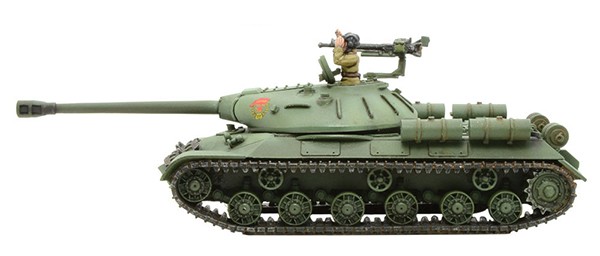
For the Soviets the Seelowe Heights theatre selector list perfectly illustrates the Red Army in its prime as a brutal and mobile mechanised force. It is particularly representative of the type of opposition the Western Allies would likely face in a Red Star-White Star battle.
Special Rules for the Soviets
“They have chickens in the coop and cattle on the hoof”
To add a little uncertainty to your scenarios the ‘Supply Issues’ scenario rules from the Ostfront supplement could also be incorporated when using the Soviets to represent Patton’s vision of a Red Army on the verge of running out of essential supplies with its lines of communication ravaged by Western Allied Airpower.
Equipment
In playing a late 1945 game it can be interesting to incorporate some of the ‘toys’ that never made it into combat in Europe. You could for example refer to the Ostfront theatre book, which contains Bolt Action statistics for the latest iteration of the ‘Stalin’ heavy tank: the IS-3 ‘Pike’. Entering service in May 1945, these behemoths would have been amongst the Allied tankers’ worst nightmares, with its cunningly angled frontal armour and domed turret proving difficult for even the most powerful of Allied anti-tank weaponry to penetrate.
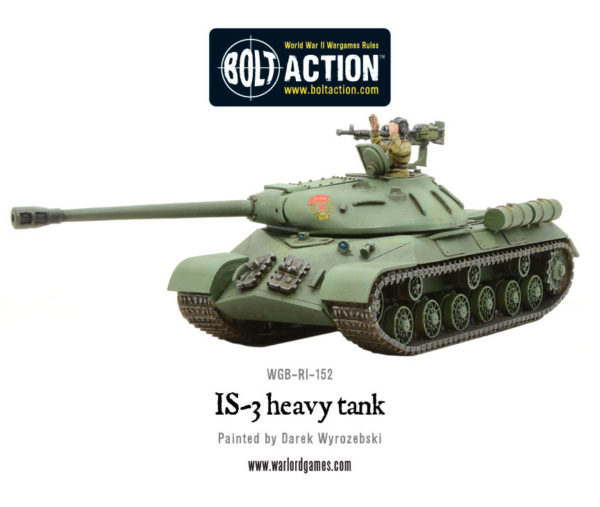
The United States
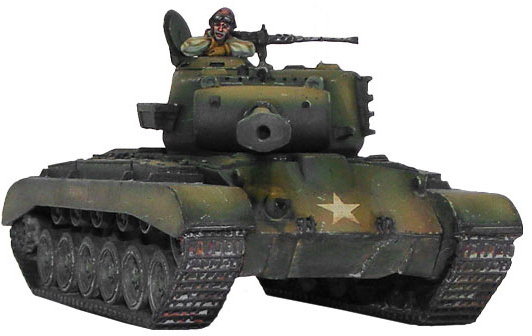
The 1945 Rhineland or 1945 Operation Grenade theatre selectors provide excellent examples of the US Army as it would have appeared in mid to late 1945. For ‘Tank War’ scenarios the Americans should primarily field 76mm armed Shermans which were rapidly replacing the older 75mm versions. These will be a good foil to the Soviet T34/85.
Special Rules
“Red Eagles over Germany”
During the later stages of the war against Germany, the US armies enjoyed operating on a battlefield where air supremacy was assured. Against the Soviets things might have been different as the Red air force possessed huge numbers of very capable ground attack aircraft and low level fighters which could certainly have made the GI’s lives more difficult.
In any Red Star-White Star game the United States player should only be able to use the ‘Air Superiority’ special rule if during game setup he throws a 4+ on a die roll.
Equipment
‘Pimping’ the Pershing:
The United States lists include the formidable M26 Pershing medium tank. The development of this tank was troubled and delayed due to on-going interdepartmental arguments in the United States.
The ‘untested’ tank was rushed to Europe where in its few encounters with the German ‘big cats’ it proved itself. Lessons were learned and a few variants were ordered into production. With the end of the war in Europe these projects were mostly cancelled. However, had war broken out with the Soviets some of these designs had may have made it onto the battlefield.
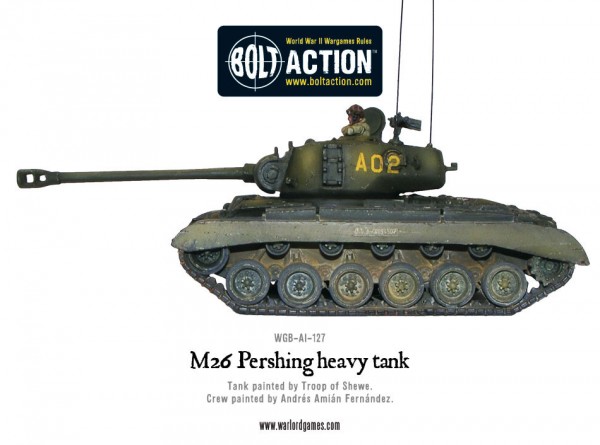
M45 (T26E2)
To meet the specific needs of the European Theatre of Operations it was decided to create a variant of the Pershing armed with a 105mm howitzer to operate as a heavy support tank.
Cost: 220pts (Inexperienced), 275pts (Regular), 340pts (Veteran)
Weapons: 1 gyro-stabilised turret mounted medium howitzer with co-axial MMG and forward facing hull-mounted MMG
Damage Value: 10+ (heavy tank)
Options: may add a pintle-mounted HMG to the turret for 25pts
T26E5
At least one Pershing deployed to Europe was field-modified with an additional 76mm of spaced armour plates taken from the remains of destroyed German tanks. The additional resilience was noted and an up armoured Pershing assault tank was ordered. This added protection did however come at the cost of reduced speed and mobility. The M26 chassis used the same engine as the M4A3 Sherman but was already 10 tons heavier and the extra armour would only make that worse.
Cost: 434pts (Inexperienced), 545pts (Regular), 666pts (Veteran)
Weapons: 1 gyro-stabilised turret mounted super –heavy anti-tank gun with co-axial MMG and forward facing hull-mounted MMG
Damage Value: 11+ (super heavy tank)
Options: may add a pintle-mounted HMG to the turret for 25pts
Special Rules:
• Slow: a T26E5 up-armoured to super-heavy is slow – its move is reduced to
6” advance and 12” run
The Germans
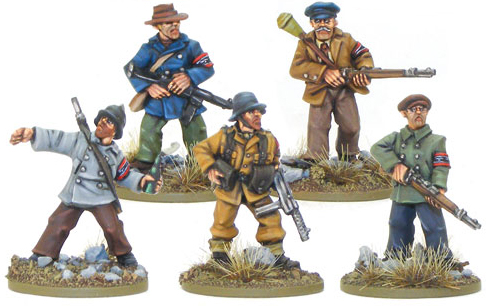
Finally some notes on the Germans. By May 1945 the German army was largely destroyed with its men either in detention camps or having quietly returned home. A vigorous de-nazification programme was underway to toot out the Waffen SS and other politically motivated elements. However, many alternative history imaginings have a fanciful notion of the German Army and the Western Allies somehow getting together and fighting communism as a common enemy. Considering what the Western Allies found when they liberated the concentration camps I find it rather far-fetched to imagine such a scenario happening. However had the Red Star White-Star War gone badly for the Western Allies with the Soviets advancing towards the Rhine the Allies may have allowed the formation of Local Defence Volunteer groups to assist with defence.
The fearful reputation of the Soviet Army in its treatment of German civilians would probably have created no shortage of volunteers. At the same time these individuals would be under no illusion of their fate as ‘Hitlerites’ if captured by the Red Army. These groups would have been a mix of recently serving soldiers, old men, boys and perhaps a scattering of fanatical SS types who had escaped detection. Whilst being armed with surplus American equipment some legacies from the ‘old days’ might still remain such as that crate of Panzerfausts old Wolfgang had kept hidden in his cellar for a rainy day!
In my games of Bolt Action I have based these units on the Volksturm Squads found in the Armies of Germany book, but added the Mixed Quality special rule to reflect the diamonds amongst the rough in these units. These units would follow the German army special rules and not the US ones (e.g. better MGs and NCOs, but no special rule about entering from reserve…). I would allow any of the US Army Theatre selectors to take 0-2 Local Defence Volunteer squads as part of their additional 0-4 infantry squads.
Modelling these units can also be a lot of fun allowing interesting combinations of the US and German plastic figure sets. For example US helmeted, heads added to Landser or Grenadier bodies with a mix of German and American weapons – alternately, the Warlord Partisan models, or perhaps some of the Volkssturm models from the ‘Last Levy’ Box set would look the part!
Local Defence Volunteer Squads
Cost: Inexperienced Infantry 30pts
Composition: 1 NCO and 4 men
Weapons: Rifles
Options:
• Up to 5 additional men with rifles at +7 points each
• The NCO may have a submachine gun for +3pts
• Up to 1 man can have a light machine gun for +20pts – another man becomes the loader
• Up to 3 men may have Panzerfausts in addition to other weapons at +5 Points each
Special Rules:
• Mixed Quality – Local Defence Volunteers are Green and must test when they first suffer a casualty as described on page 70 of the rulebook. However if they are uprated to regular infantry as a result of the test, then roll a further die and on a roll of 5 or 6 they are uprated to veterans.
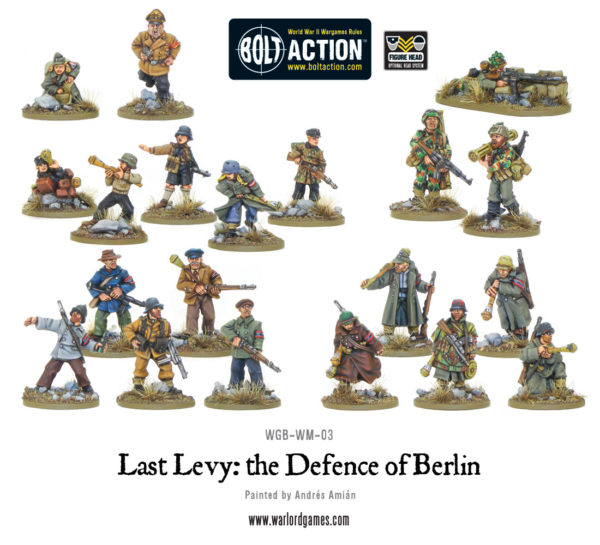
Do you have an article within you? Show yours or your clubs collection to the world of Bolt Action by dropping us a line with a couple of pictures to info@warlordgames.com or share with all over at the Warlord Forum

